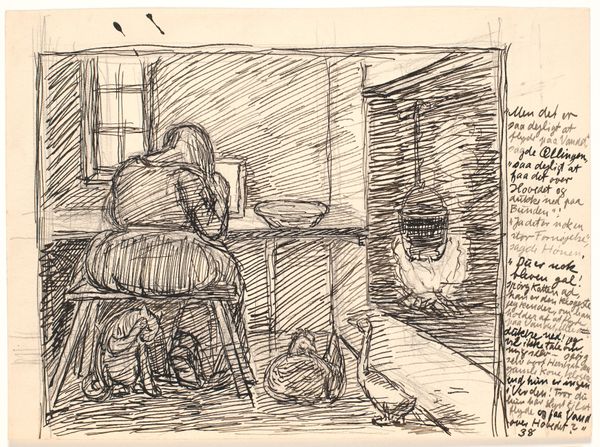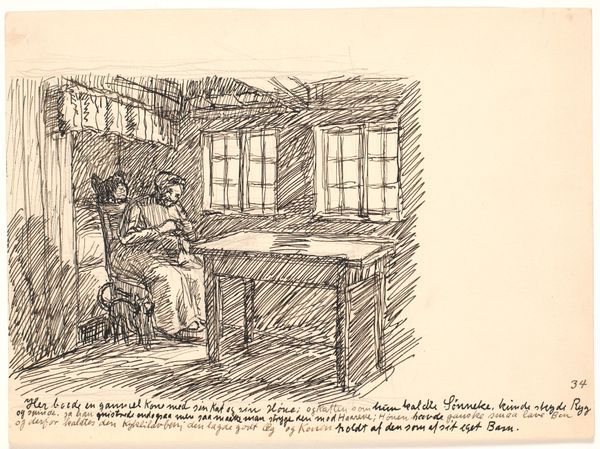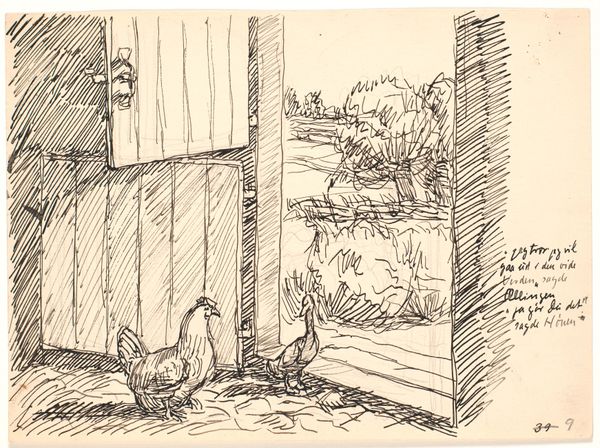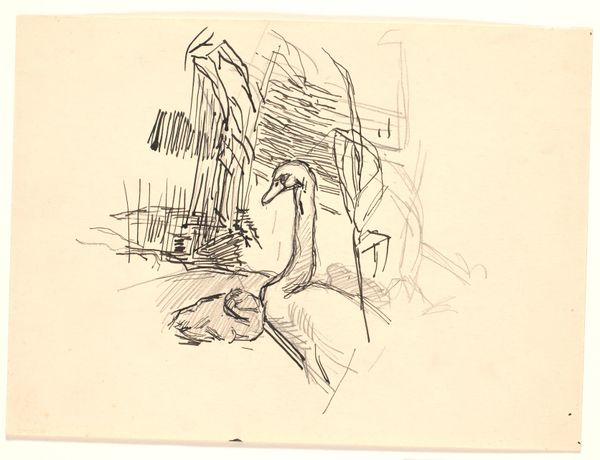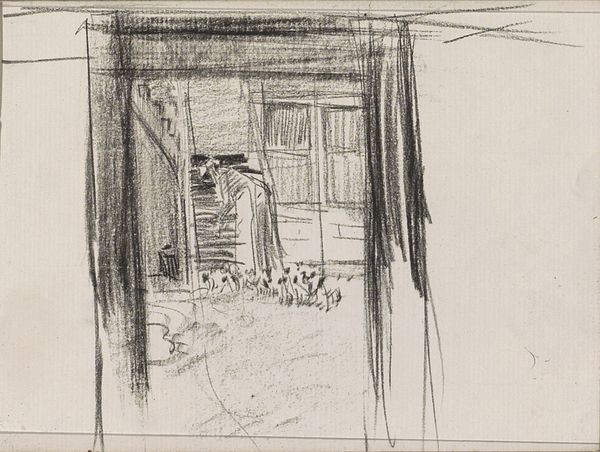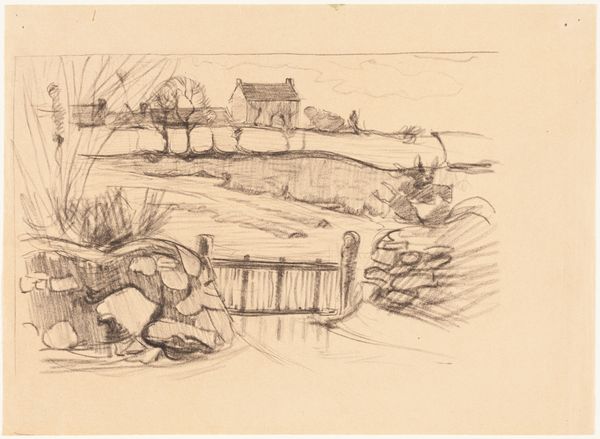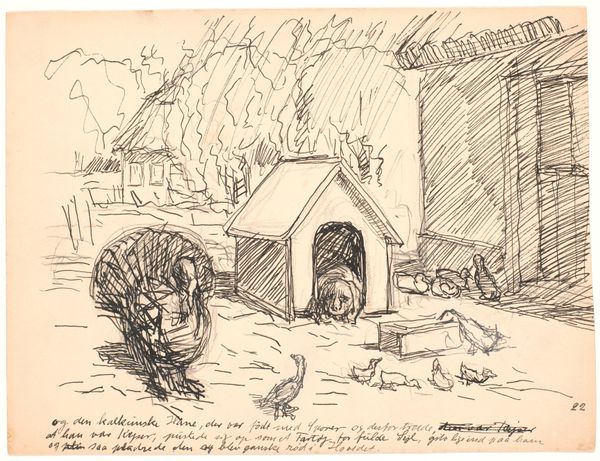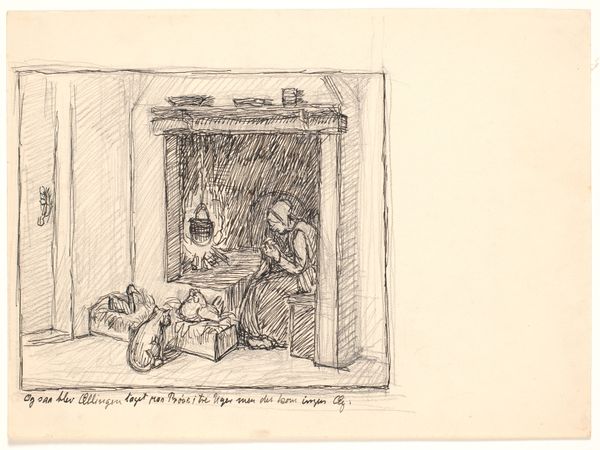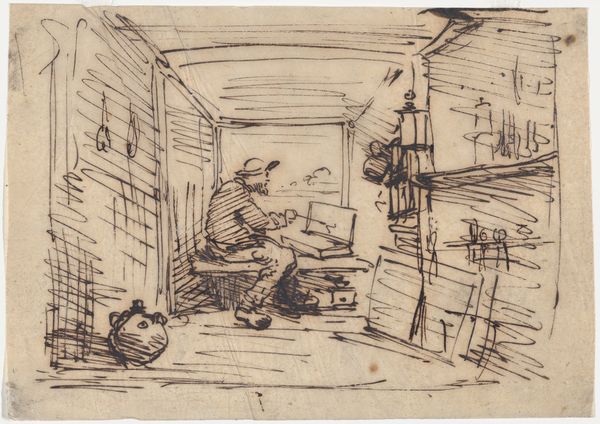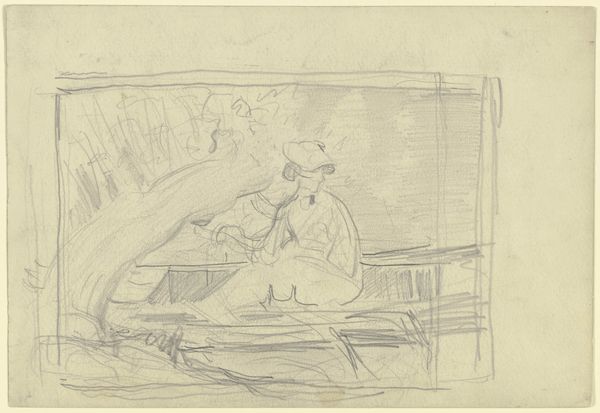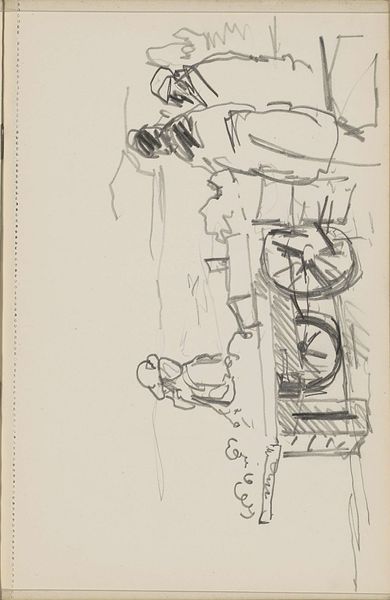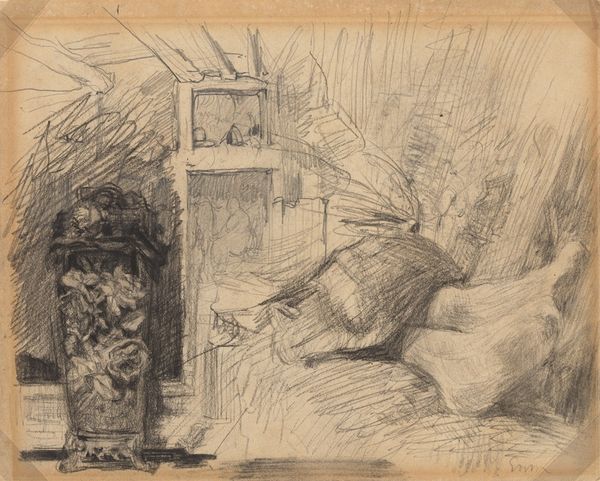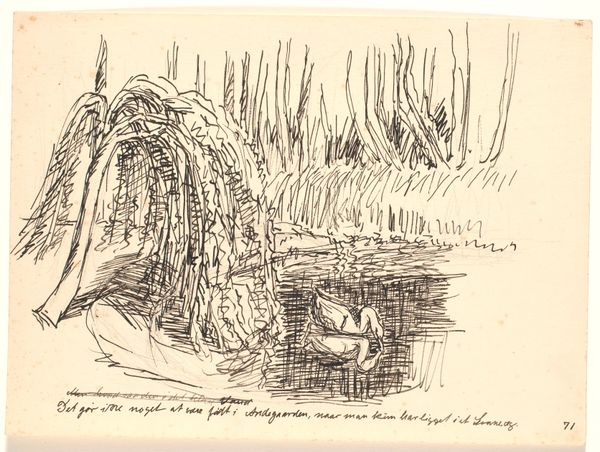
Dimensions: 248 mm (height) x 338 mm (width) (bladmaal)
Editor: We're looking at "Og saa blev Ællingen antaget paa Prøve…" by Fritz Syberg, from 1928. It's an ink drawing. There’s a wonderful stillness to the scene – a cat, a figure in bed, the quiet geometry of the furniture. How do you interpret this work? Curator: It’s fascinating how Syberg uses such simple means, ink on paper, to depict this intimate scene. For me, it speaks volumes about the social history of the time. The spareness of the interior suggests a working-class setting, the kind of domestic space that’s often overlooked in grand historical narratives. Notice the title; the handwritten inscription suggests a narrative element; have you thought about how that shapes our reading? Editor: It makes it more personal, definitely. The “Ællingen” - which I think is a duckling - being "accepted on trial"... It sounds like a folk tale. Do you think Syberg intended a social commentary through the domestic and mundane presented almost like a fable? Curator: Absolutely. Genre paintings like this, even with an impressionistic style, become vehicles for conveying socio-political realities. By focusing on everyday life, Syberg elevates the ordinary and asks us to consider the lives of those often marginalized in official histories. How does the setting contribute to this message? Editor: Well, the room itself feels confined, maybe suggesting limited opportunities? The light is blocked out by very expressive cross-hatching. Curator: Precisely! And this visual tension reinforces the themes of resilience within restricted environments. Considering how it challenges conventional historical representations, do you think this drawing plays a part in democratizing art and its subjects? Editor: That's a really interesting thought! Seeing the value in the ordinary feels really powerful. I never considered the politics of imagery in genre paintings like this before. Curator: Indeed. It showcases how social context shapes artistic meaning, changing how we view both art and the world it reflects.
Comments
No comments
Be the first to comment and join the conversation on the ultimate creative platform.
